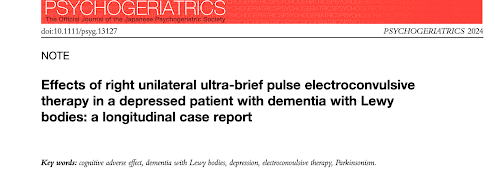Two Cases of Cotard Syndrome: ECT's Role Discussed

Out on PubMed, from authors in Florida, is this case series: Psychotropic Management in Cotard Syndrome: Case Reports Supporting Dual Medication Management. Fusick AJ, Davis C, Gunther S, Klippel C, Sullivan G. Case Rep Psychiatry. 2024 Apr 9;2024:7630713. doi: 10.1155/2024/7630713. eCollection 2024. PMID: 38633733 The abstract is copied below: Cotard syndrome is a rare presentation where patients present with nihilistic thoughts of dying or already being dead. These delusions manifest from either a medical or psychiatric etiology and can be difficult to treat. Recently Couto and Gonçalves purposed that treatment should include an atypical antipsychotic alone or in combination with either a mood stabilizer or antidepressant. Here the authors advocate for a more specific but well-known psychotropic regimen, namely the combination of olanzapine and fluoxetine. We conducted a literature review and of 246 papers identified, only three reported using a combination of fluoxetine and olan













